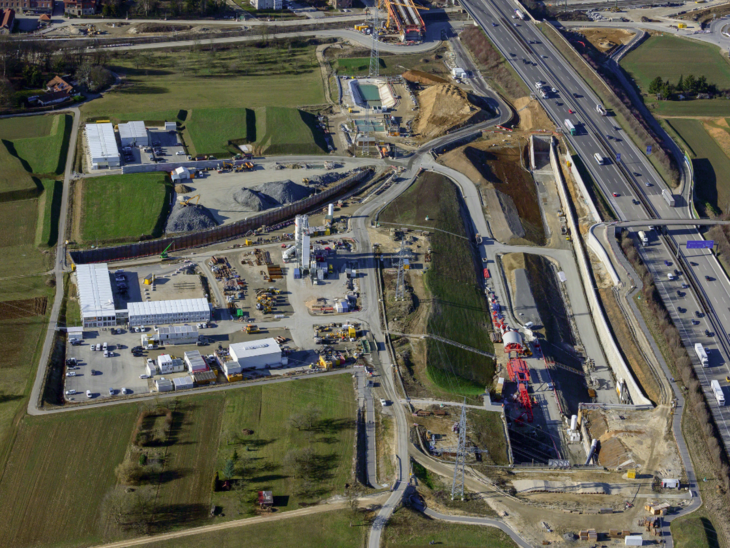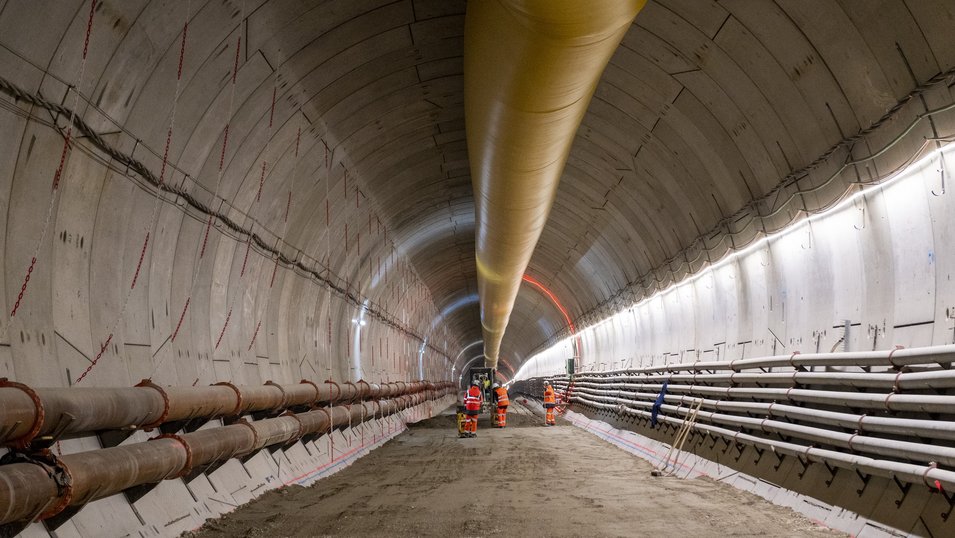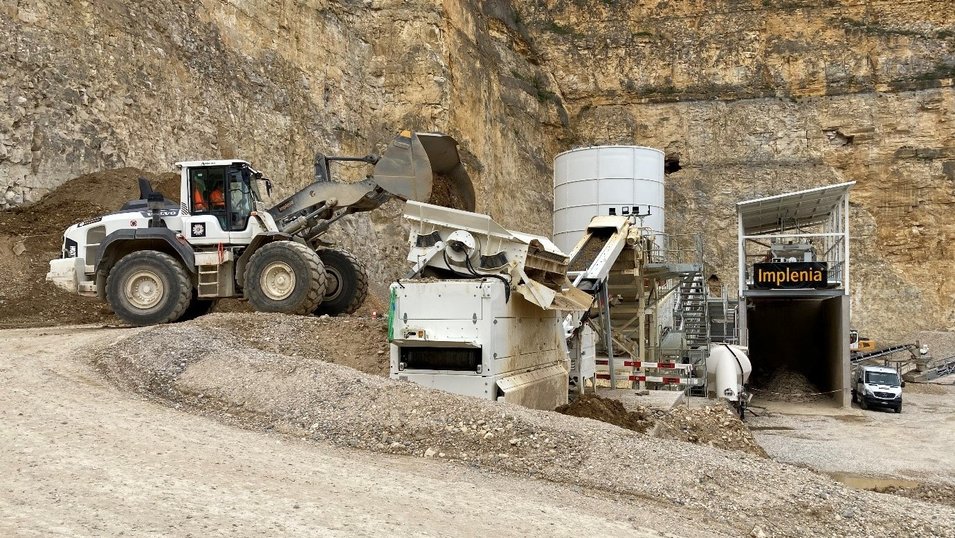![[Translate to en-CH:]](/fileadmin/implenia.com/nachhaltigkeit/bilder/Waldenburgbahn_Kieswerk.jpg)
[Translate to en-CH:]
[Translate to en-CH:]
Implenia Civil Engineering
Closing material cycles on site
If we can close material cycles, we can save resources and potentially achieve a significant reduction in the construction industry’s CO2 emissions. For example, it is often possible to avoid transporting large quantities of building materials over long distances. And too much material that could actually be used again is still being thrown away or sent to landfill sites.
This is why Implenia, as part of its sustainability strategy, has undertaken to reduce construction waste significantly by 2025, sort it more effectively and increase the recycling rate to 100 percent wherever this can be done in an environmentally sensible way. The company also wants to design processes and material chains that make it easier to establish closed cycles within its business operations.
This isn’t just a theoretical philosophy, but a tried and tested way of doing things, as the following two examples from Division Civil Engineering show. Implenia believes that the potential in this area of business is particularly good because of the large volume of excavated material it produces.
In north-western Switzerland near Basel, Implenia is currently expanding the railway station in Liestal to accommodate four tracks. The company is also refurbishing the nearby “Niederdorf” section of the 13 kilometre-long Waldenburgerbahn railway. Implenia is using new methods to process materials on the two construction sites, which are very close to each other, and has invested more than three million francs in a semi-mobile gravel plant. Excavated material is washed in this plant and sorted into different sizes.
The temporary facility processes most of the suitable material removed from the construction site so that it can be recycled. The resulting aggregate is returned to where it came from for use as certified gravel mixtures. When construction work finishes at the end of 2023 the semi-mobile gravel plant can be dismantled and rebuilt at a new location.
In Lyon, France, Implenia has been awarded the contract to build part of the extension of Metro line B to the hospitals in the south of the city. The company is creating an access shaft as well as a station and a 2.4 kilometre section of tunnel. More than 430,000 tonnes of soil will be excavated during the civil engineering work and tunnelling.
In this project too, almost all of this material (99.9 percent) will stay within 30 kilometres of the site. Approximately 40,000 tonnes is being recycled on site – for use as grout to fill the tunnel boring machine (TBM), for example, or as hardcore for the track beds. This is made possible by the treatment station attached to the TBM, which processes up to 2,000 cubic metres of drilling mud per hour and sorts out the different solids. 50 percent of the material excavated from the tunnel is thus reused as building material. The rest is used to remediate old quarries in the area.
- Setting the standard for asphalt recyclingImplenia’s modernised and expanded Trois Ponts surfacing plant in Ecublens is a great example of a circular economy in practice. As well as saving valuable raw materials, the plant creates less air pollution than any comparable facility in Switzerland.
- Competition stokes a passion for sortingImplenia has come up with a novel idea for improving the sorting of recyclable materials on its construction site for a new coastal highway in Norway. And now almost all construction waste ends up in the correct container.
 Sustainability in focusThe twin eight-kilometre tunnel bores between Stuttgart and Ulm set a standard for climate-friendly mobility. The project’s own sustainability report documents the successes achieved on the construction site.
Sustainability in focusThe twin eight-kilometre tunnel bores between Stuttgart and Ulm set a standard for climate-friendly mobility. The project’s own sustainability report documents the successes achieved on the construction site.




